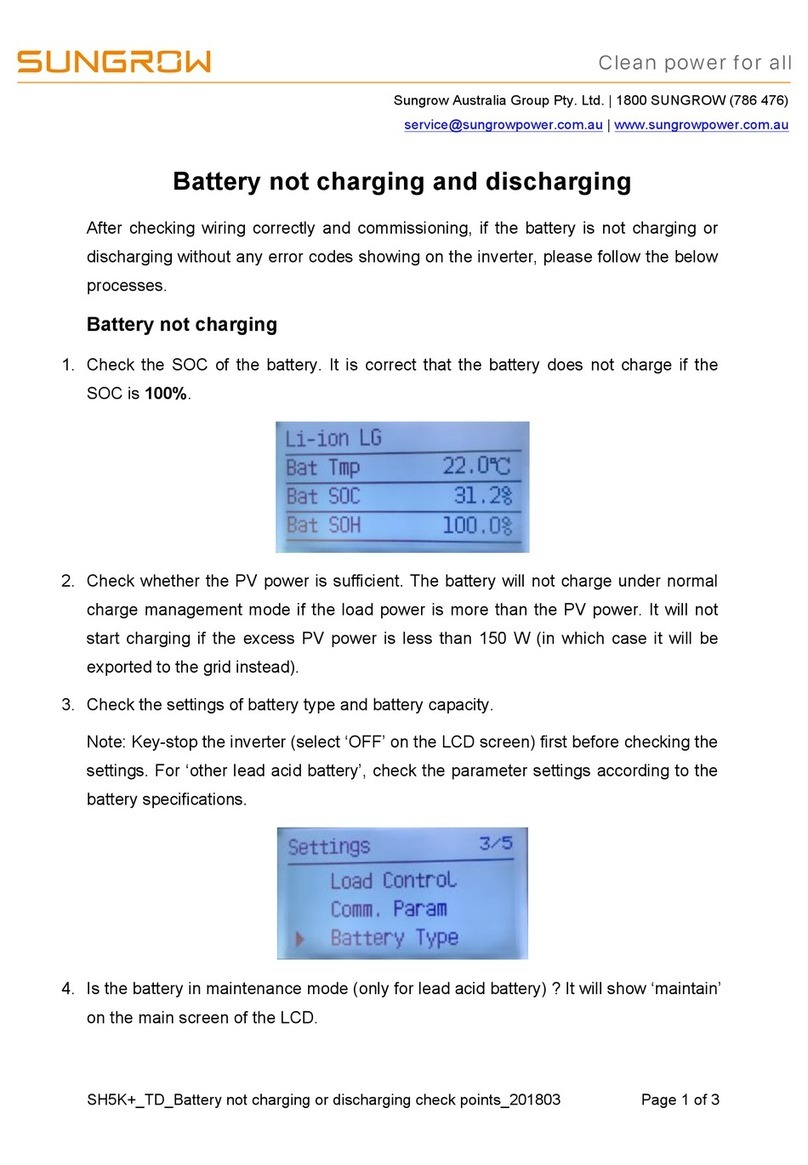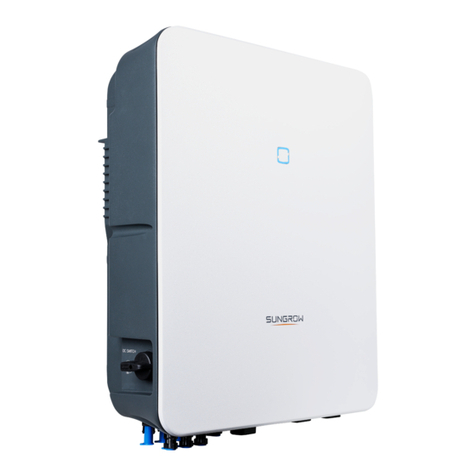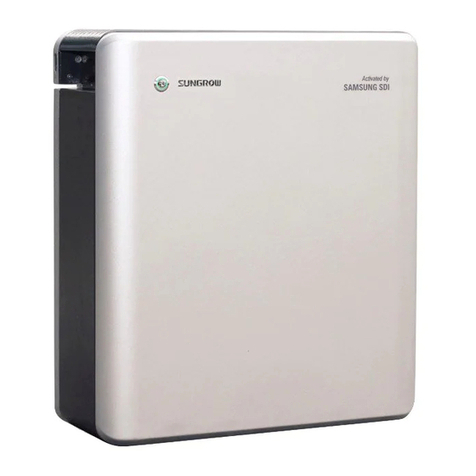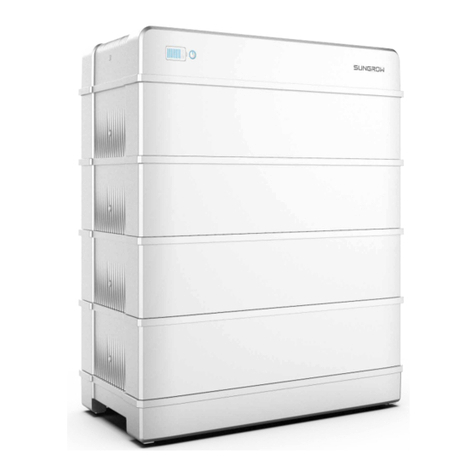1 Safety SBP4K8 user manual
4
If one is exposed to the leaking substance, follow the suggestions below to
minimize the chance of injury:
Inhalation: Evacuate the contaminated area, and seek medical aid.
Eye contact: Rinse eyes with large amounts of water using emergency eye wash
bottle for at least 15 minutes, and seek medical aid immediately.
Skin contact: Wash the affected area thoroughly with plenty of water for at least
15 minutes. If possible, remove or saturate contaminated clothing with water.
Seek medical aid if the patient is distressed.
Ingestion: Induce vomiting, and seek medical aid immediately.
Wipe out the contacted area with a sponge or cloth that is soaked in water until you
obtain medical aid. These materials can damage skin and eyes, causing blindness.
1.3.2 Fire
Fire may occur with the battery despite its careful design. Likewise, a fire near the
battery can cause it to catch fire.
Protective equipment
A respirator is not required during normal operations.
In the event of a fire, hazardous fumes including carbon monoxide, carbon dioxide,
and/or various hydrocarbons may be emitted. To comply with the Personal
Protective Equipment Directive (89/686/EEC), use a full-face self-contained
breathing apparatus (SCBA) with full protective gear during fire fighting.
Fire fighting
In the event of a fire, only qualified firefighters with appropriate
protective equipment are permitted to enter the room where the battery
is located.
Battery fires can take up to 24 hours to fully extinguish. Consider allowing
the system to burn. Smoke indicates that the battery is still burning.
Always note that there is a risk of the battery re-igniting.
Proceed as follows for firefighting.
1. Shut off any connected power system or electronics such as the battery,
battery isolator, PV DC isolator(s), AC isolator, solar supply main switch and
normal supply main switch.


































